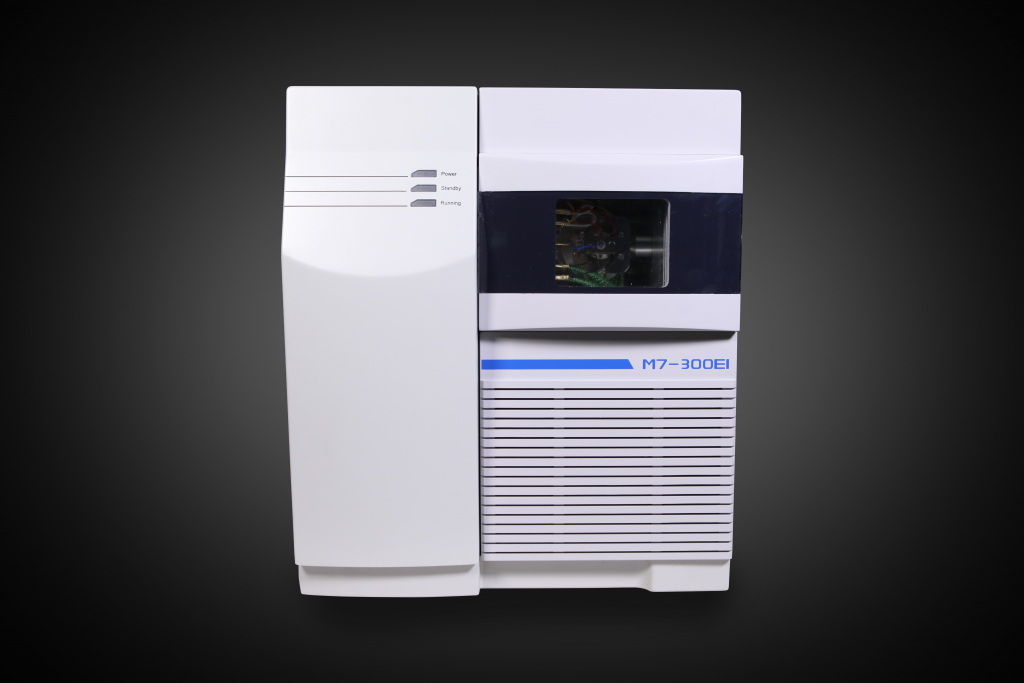Gas Chromatography Mass Spectrometry (GC-MS) is a strong tool. It helps find complex gases in many fields. Are you checking air quality? Or working in a factory? Maybe you’re studying medicines? GC-MS gives clear and accurate results. In this blog, we explain how GC-MS works, its uses, benefits, and why PERSEE is a great choice for top-notch GC-MS tools.

The Basics of Gas Chromatography Mass Spectrometry
GC-MS mixes two methods. Gas chromatography (GC) splits compounds in a mix. Mass spectrometry (MS) names and measures those compounds. This teamwork makes GC-MS perfect for checking gases that evaporate easily. It breaks a sample into parts and studies their makeup.
GC-MS works by moving compounds differently. In GC, compounds turn into vapor. An inert gas carries them through a tube. They stick to the tube’s inner lining in unique ways. This splits them apart. Then, MS looks at these split compounds. It makes special patterns, like fingerprints, to identify each one.
This basic idea helps us understand the steps of GC-MS. These steps ensure results you can trust.
Steps in the Process of Gas Chromatography Mass Spectrometry
GC-MS has a few key steps. Each step ensures gases are split and named correctly. Let’s look at these steps closely.
Sample Preparation Techniques for Analysis
First, you must get samples ready. This makes them work well with GC-MS tools. Good prep leads to better results. Here are common ways to prepare samples:
- Headspace Sampling: Grabs gases above a liquid or solid sample.
- Purge and Trap: Collects tiny amounts of gases by pushing them out and catching them.
- Solid-Phase Microextraction (SPME): Uses a fiber to soak up gases for testing.
Careful prep reduces errors. It also makes the analysis more sensitive.
Separation of Compounds Using Gas Chromatography
Next, the sample goes into the GC system. It turns into vapor there. A safe gas, like helium, carries it through a thin tube. Compounds act differently with the tube’s lining. So, they split apart. Each compound leaves the tube at a different time.
This splitting is key. It ensures the next step gets clean compounds to check.
Detection and Identification Through Mass Spectrometry
After splitting, compounds enter the mass spectrometer. Here, they get zapped into tiny bits. These bits form patterns unique to each compound. By matching these patterns to known ones, GC-MS names the gases and tells how much of each is there.
This mix of splitting and naming makes GC-MS great for studying complex gases. It works in many areas.
Applications in Identifying Complex Gases
GC-MS is useful in many jobs. It helps analyze gases accurately. Let’s explore some big uses.
Environmental Monitoring and Air Quality Analysis
GC-MS is vital for checking air. It finds tiny amounts of harmful gases, like benzene or toluene. Scientists use it to watch factory emissions. This helps keep air clean and follows laws to protect people.
Industrial Applications in Chemical Manufacturing
In factories, GC-MS checks product quality. It looks at raw materials and final goods. It spots unwanted stuff, like leftover solvents. This helps factories make pure products and work better.
Healthcare and Pharmaceutical Uses
In medicine, GC-MS helps make safe drugs. It finds leftover solvents to ensure drugs are safe. It also checks breath samples for disease signs. This helps doctors diagnose illnesses and plan treatments.
These uses show how GC-MS helps science and industry grow. Its special skills make it a top choice.
Benefits of Using Gas Chromatography Mass Spectrometry
GC-MS has many advantages. These make it popular for gas analysis. Here are the main benefits for users.
High Sensitivity and Accuracy in Detection
GC-MS is very sensitive. It finds gases in tiny amounts, as low as parts per billion (ppb). This makes it great for jobs needing exact results, like checking air quality.
Ability to Analyze Complex Mixtures
GC-MS handles mixes with many compounds. It splits and names them clearly. Even similar gases get identified correctly. This gives full details about a sample.
Time Efficiency in Analytical Processes
Modern GC-MS, like PERSEE’s, is fast. It scans quickly and uses automatic steps. Results come in minutes. This speeds up lab work and boosts productivity.
| Benefit | Description | Impact |
| High Sensitivity | Finds tiny gas amounts at ppb levels | Gives exact results for important tasks |
| Complex Mixture Analysis | Splits and names many compounds | Shows full sample details |
| Time Efficiency | Quick scans and auto workflows | Makes labs faster |
These benefits show why GC-MS is key in analysis. Choosing a good supplier matters a lot.
Introduction to PERSEE as a Reliable Supplier
We at PERSEE have made analytical tools since 1991. We’re proud to offer advanced GC-MS solutions. Our tools help customers reach their goals. Our focus on new ideas and quality makes us a trusted name worldwide.
PERSEE’s Expertise in Gas Chromatography Mass Spectrometry Solutions
With over 30 years of work, we know GC-MS well. Our M7 Single Quadrupole GC-MS is reliable and easy to use. It has ISO9001, ISO14001, and CE certifications. This shows our commitment to quality and eco-friendly practices.

Key Features of PERSEE’s Instruments
Our GC-MS systems have cool features to make analysis better:
- Fast Scanning: Scans in just 2 seconds with a speed of 30,000 nm/min.
- Wide Range: Handles strong samples with a -4 to +4 Abs range.
- Easy Workflow: Measures in three clicks with methods you can customize and share.
These features make our tools, like the M7, great for tough jobs. Want to know more? Contact us.
Our skills and modern tech make us leaders in gas analysis. We help customers stay ahead.
Conclusion: Advancing the Identification of Complex Gases with Technology
Gas Chromatography Mass Spectrometry changes how we find complex gases. It helps in air checks, factory work, and medicine. Its sensitivity, mix-handling, and speed make it a must-have tool. At PERSEE, we’re dedicated to giving you great GC-MS tools. Check out our products to improve your gas analysis today.
FAQs on Gas Chromatography Mass Spectrometry
Q1 What types of gases can be analyzed using gas chromatography mass spectrometry?
A1 GC-MS works on gases that evaporate easily, like volatile organic compounds (VOCs) and hydrocarbons. It also checks leftover solvents. It’s used in air checks, factories, and drug-making to find gases like benzene or carbon dioxide.
Q2 How does gas chromatography mass spectrometry differ from other analytical methods?
A2 GC-MS is special. It splits and names compounds in one go. Unlike infrared or liquid methods, it makes unique patterns for each compound. This gives clear and specific results for complex gases.
Q3 Is gas chromatography mass spectrometry suitable for beginners to operate?
A3 Modern GC-MS, like PERSEE’s M7, is easy to use. It has simple controls and auto steps. Beginners can learn with training. Our programs help users get good results. For more info, visit PERSEE’s homepage.


